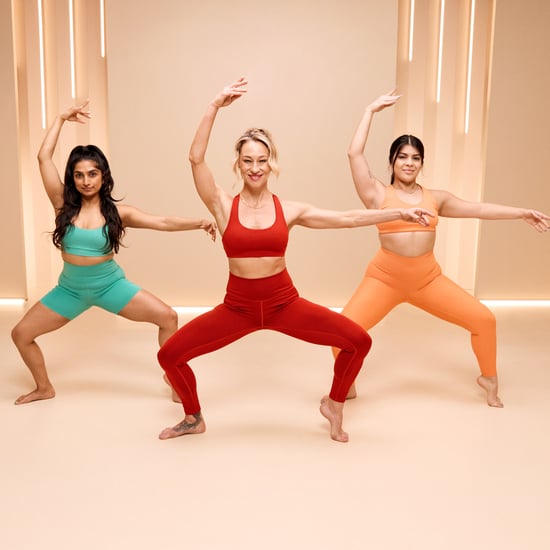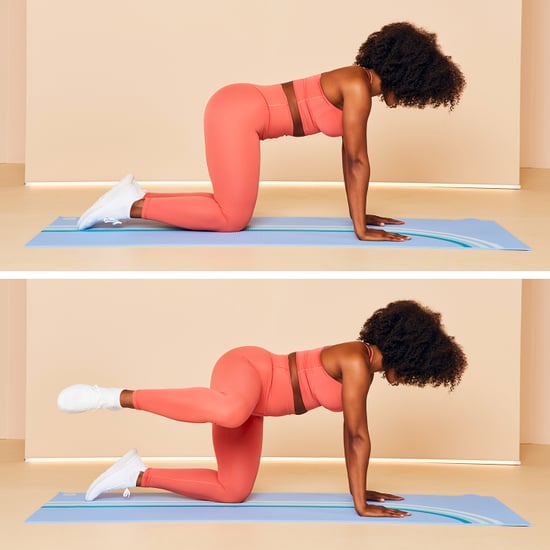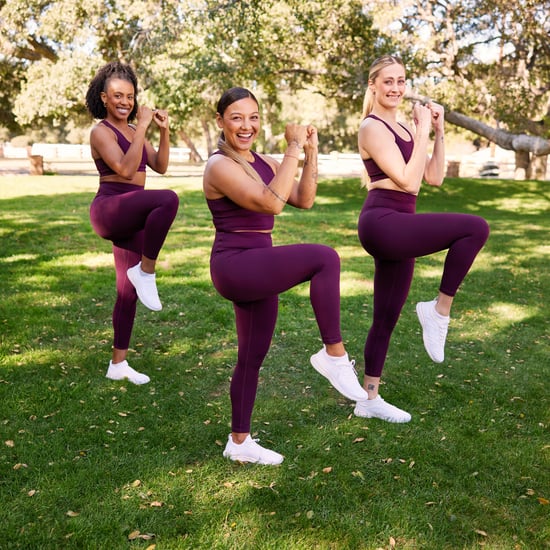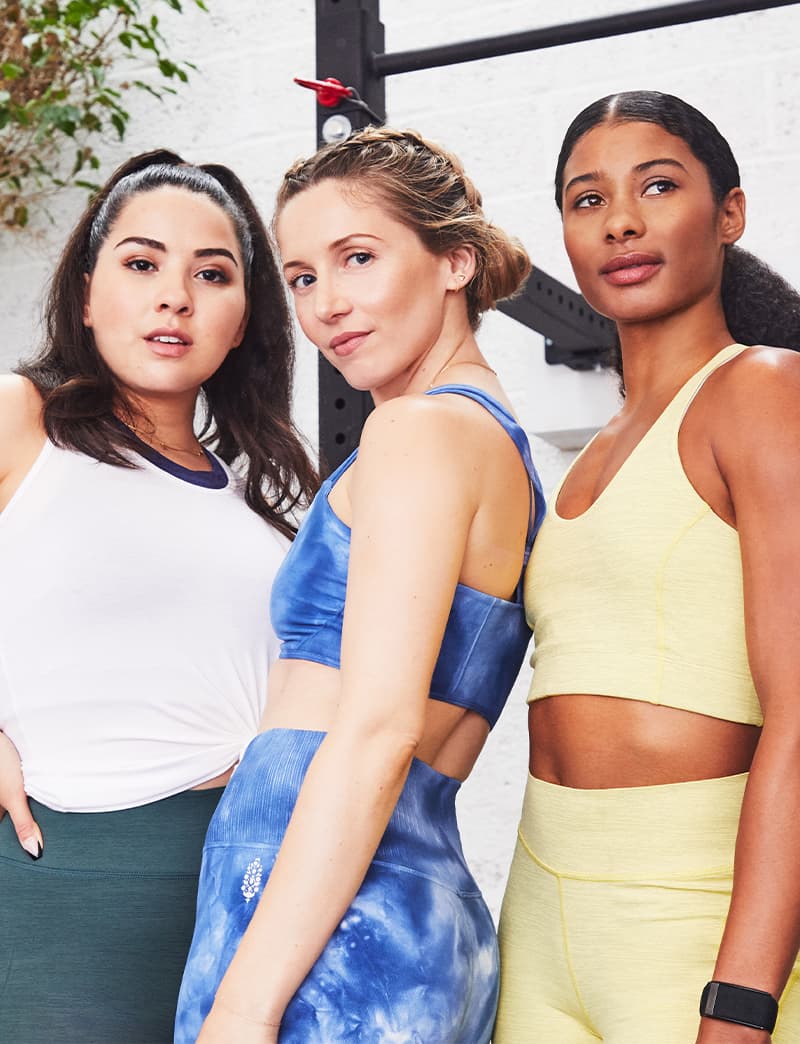RPE (Rate of Perceived Exertion) Scale For Exercise
RPE: What It Is and Why It's Worth Using, According to a Trainer

The current recommendations from the US Department of Health and Human Services say adults should aim to get 150 to 300 minutes of moderate physical activity, 75 to 150 minutes of vigorous physical activity, or an equivalent combination of the two, every week.
That all sounds well and good, but how do you know whether your workouts fall into low, moderate, or vigorous intensity? If you have a fitness tracker or smartwatch, it might be as simple as looking down at your wrist. But if you don't, the answer is knowing your rate of perceived exertion (RPE).
While you've likely seen this acronym before, if you don't understand what RPE means or how to use it in practice, you're not alone. Jess Kilts, a strength trainer with wellness platform Centr, shares some wisdom on the meaning of RPE, an easy RPE scale to use during your workouts, and why it's worth learning.
What Does RPE Mean?
RPE stands for rate of perceived exertion. At its most basic, it's a way to note how hard you're working. "Perceived exertion is how hard you feel your body is working, taking into consideration heart rate, increased breathing, increased sweating, muscle fatigue, etc.," Kilts says.
The concept has been around since the 1960s, when a Swedish researcher named Gunnar Borg invented RPE to help study participants gauge the intensity of their exercise, according to the National Academy of Sports Medicine.
Gauging your perceived exertion during a workout could be as simple as recognizing your effort as "easy" or "hard," though RPE is typically expressed using a specific scale. "The RPE scale itself is just a numerical list of values used to describe how hard an individual is working during physical activity," Kilts continues.
Unlike speed, weight lifted, reps, or even heart rate, RPE is something only you can feel for yourself. Your RPE will likely be different from someone else doing the exact same workout, and that's totally OK.
How to Use an RPE Scale
There are two different RPE scales used in fitness settings: a simple 0-10 scale and the Borg RPE scale, which goes from 6-20. Because both scales do the same thing, it's simply a matter of personal preference on which one you use.
For many people, the 0-10 scale can be simpler to understand, since it's we're more accustomed to thinking about things on a scale of 0-10 or as a percentage of 100. (So that's the one we're outlining below.) "The best way to visualize it is if you have a scale between 0-10, with 0 being 'at rest' and 10 being 'maximum effort,'" Kilts says.
However, if having a greater range of choices (from 6-20) makes more sense to you, perhaps you'll get better use out of the Borg RPE scale. It starts with 6 being "at rest," 13 being "somewhat hard," and 20 being "maximum effort".
It can be easiest to consider the RPE scale during a straightforward cardio workout like running or cycling since it's easy to imagine pushing harder (i.e. going faster or increasing the resistance). However, you can also use RPE for strength-training workouts, too; you just need to consider how many more reps you might be able to do with good form.
Check out the full 0-10 RPE scale below for more detail.
| RPE | What It Means |
|---|---|
| 0-1 | No exertion. You're completely at rest. |
| 2–3 | Light exertion. This should be your level when stretching. |
| 4–5 | Moderate exertion. This is how you should feel when you're warming up, cooling down, or recovering. You're breathing a little faster, and your heart is pumping harder. You feel warmer, but could still hold a conversation. |
| 6–7 | Hard exertion. You're breathing pretty hard now and probably sweating. You can talk, but it's getting tougher — you prefer to give one- to two-word answers, or when you're solidly at a 7 RPE, no talking at all. If strength training, you might have three or four reps left. |
| 8–9 | Very hard exertion. You're breathing really hard and you really don't want to talk at all. You're wondering how long you can go on like this, but you could push a little harder if needed. If strength training, you could do one or two more reps. |
| 10 | Maximum exertion. You can't keep this pace for more than a minute or you can't do another rep. Speaking is impossible. This is your limit. |
Which RPE Should You Aim For While Training?
It depends on how hard you want your workout to be or how hard it's supposed to be, according to your training plan. "In most training settings, depending on the exercise selection and intended stimulus, we should aim to be between 7-9 out of 10," Kilts says, but a warmup or stretch will likely fall down in the 2-4 RPE range.
To offer some additional examples of what this could look like, a low-intensity like a hot-girl walk or mat Pilates class might fall in the 4-5 RPE range. However, if you're on a hot-girl walk and start going up a steep hill, that 4-5 RPE could quickly become a 7-8 RPE. A cycling workout could be anywhere from 5-10 RPE, depending on how hard your resistance is or how fast you're pedaling. Likewise, a strength-training workout could fall anywhere between 5-10 depending on how much weight you're lifting, how much rest you're taking, and which moves you're doing.
Remember that RPE will look different for everyone, however, and your RPE during a certain type of workout will change depending on how well your body is accustomed to that exercise and how hard you're pushing yourself.
Why Should You Pay Attention to RPE During Workouts?
If you're not training for a hyper-specific goal — like a new lifting PR or a marathon — it can be hard to consciously dial your effort up and down during workouts. As a result, you may come away from a training session feeling totally beat or not satisfied enough. That's where RPE can help you get more out of your workouts.
"When it comes to programming and coaching people, I've found that if you don't give someone the intended stimulus, percentages, or at least what the effort level should be, most people will default to too easy," Kilts explains. "If you don't know how hard to push yourself, then most won't," she adds, which can translate to a lack of progress or plateau. On the flip side, "others may push too hard, overdo it, and injure themselves," she says.
That's why RPE is so useful, she says. You can always ask yourself: "How hard was that, really?"
It's also more forgiving: the scale is dynamic because it's based on an internal sensation of effort vs. an external marker like speed, weight, or rep. "What I also like about RPE is that it can be highly scalable for that day," Kilts explains. "Let's be honest, not all days in the gym are our best, and you should pay attention to that. Some days, just making it into the gym is a feat in and of itself. On those days when I'm not feeling like a total rock star, I'll often resort to RPE and at least try to gauge myself on that scale and go for at least an RPE of a 7/10. At that scale level, I know it will be enough of an effort to make me work for it, but not so much that my body isn't feeling it for that day."
On that note, you can also use RPE to guide your workout plans so you're not working out too hard too often or putting yourself in danger of overtraining.
In general, "it's important to alternate your challenging, high-intensity workouts with lower-intensity, less physically demanding workouts," according to the American Council on Exercise. For example, if you do a hard workout (a 9 RPE) one day, the next day, you should be an RPE of about 5 so your muscles have time to fully recover before doing another demanding workout. As your body adapts to the exercise you're doing, you might be able to do higher RPE workouts more often, but if you're a beginner or worried about injury, for example, you should keep RPE in mind when building in recovery time for your fitness routine.
TikTok's 3-2-1 workout style is a great example of this. It involves doing three days of strength training, two days of Pilates, and one day of cardio or conditioning per week, which acts as a simple formula for varying your workout intensity. In general, experts recommend doing no more than two or three high-intensity workouts per week (which could be 7-9 RPE) and alternating them with two or three days of lower-intensity routines (around 4-6 RPE), depending on how often you like to work out.
In all, RPE is a practice rooted in listening to your own body — and there's certainly no downside to doing that when it comes to exercise. If you'd like more guidance on how to implement RPE into your routine or how to create the right workout plan for you, consider working with a certified trainer or another fitness professional who can help tailor guidance to your specific needs.









